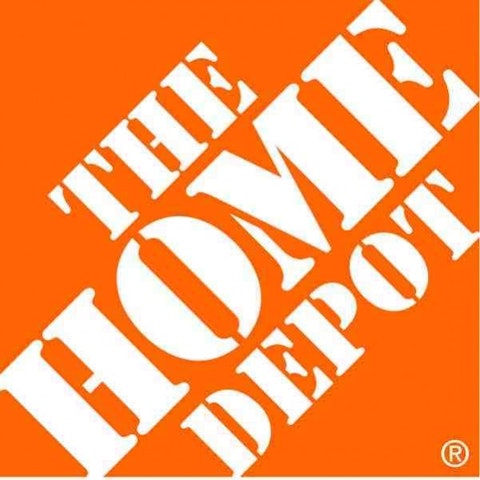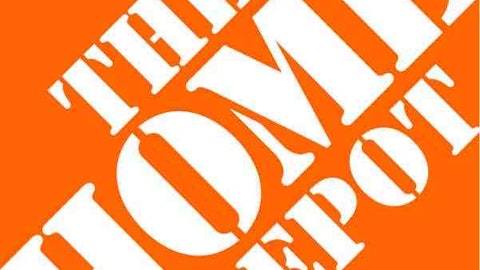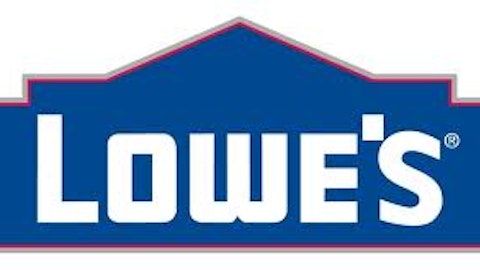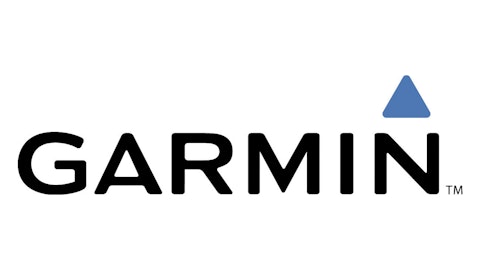The U.S. housing market recovery, although uneven, appears to be in full swing. Home prices nationwide are up about 12% over the past year, and certain markets are booming. The recent results from the two big home improvement stores, The Home Depot, Inc. (NYSE:HD) and Lowe’s Companies, Inc. (NYSE:LOW), provide further evidence that housing is no longer in the doldrums. But should you go out and buy shares in these two companies? Or has the housing recovery already been fully priced in?

Hit hard
The financial crisis hit the home improvement companies especially hard as home sales plummeted. The Home Depot, Inc. (NYSE:HD)’s revenue peaked at $90 billion in 2006, only to fall for three years in a row to $66 billion by in 2009. Lowe’s Companies, Inc. (NYSE:LOW) revenue stagnated during this time, likely helped by the fact that it is a smaller company than its competitor. In 2011 both companies returned to growth, coinciding with the beginning of a rebound in home sales.

US Existing Home Sales data by YCharts
The current rate, 5.39 million new homes annually, is still well below the highs of 2006. But the stocks of both companies have surged since late 2011 to levels well above those during the pre-crash housing boom, even with profits markedly lower.


HD Net Income TTM data by YCharts
So how is it that the stock prices have rocketed higher with profitability still well below decade highs? Because the full housing recovery, which is still in its early stages, is already being priced in.
Twice the price
The Home Depot, Inc. (NYSE:HD) shares traded as high as $80 in the last month, nearly twice as high as the peak before the financial crisis. Part of this is due to a massive buyback program which saw the share count reduced by about 27% since 2006, pushing per-share earnings in 2012 above those in 2006, even with net income lagging. But this only accounts for part of the price increase.
It seems that the moment housing started to improve, the stock took off and never looked back. Earnings grew far slower than the stock price, resulting in the P/E ratio rising to decade highs.

HD P/E Ratio TTM data by YCharts
The most recent earnings report seems to justify this, with EPS rising by 22.8% year-over-year on 9.5% revenue growth. Guidance for the full year EPS was raised to $3.60–nearly 20% growth from 2012. This puts the shares at about 20.5 times expected earnings.
One important thing to note is that the share buybacks are responsible for part of the EPS increase. The share count was reduced by 4.5% year-over-year, so net income grew at a slower 17% year-over-year rate.
Over the last three years earnings growth has been driven by three things: revenue growth, gross margin expansion, and operating margin expansion. The second quarter saw both gross margin and operating margin grow, putting both at record levels. Operating margin for the past six months was 12.3%, higher than any year in the past decade. Operating margin grew from 6.1% in 2008 to 10.4% in 2012, and it seems that any further growth will be difficult. Even during the boom years before the crash operating margin peaked at 11.5%.
Because of this I would expect earnings to grow at a similar rate to the revenue going forward, with per-share numbers boosted a bit by share buybacks. Low-teens EPS growth seems reasonable, making the 20+ P/E ratio seem a bit optimistic.
I think that the market is pricing in continued margin expansion, and I doubt that this can continue for much longer. The Home Depot, Inc. (NYSE:HD) shares are not outrageously overpriced, but it seems high enough to warrant caution.
A different story
Shares of Lowe’s Companies, Inc. (NYSE:LOW) haven’t shot up nearly as much as The Home Depot, Inc. (NYSE:HD). Lowe’s has failed to grow revenue by very much at all over the past few years, as the operating margin has remained well below peak levels. EPS is sill well below the high in 2006, and it seems that Lowe’s has been struggling to compete with the larger Home Depot.
This could be changing. Lowe’s Companies, Inc. (NYSE:LOW) earnings report was solid, with a 10.3% increase in sales and a 37.5% increase in EPS year-over-year. Operating margin jumped from 8.4% in the second quarter last year to 9.59% this year, still well below the 11% peak in 2006. Lowe’s guided for EPS of $2.10 for the full year, putting the forward P/E ratio at around 22.
This is similar to The Home Depot, Inc. (NYSE:HD)’s valuation, but I would argue that Lowe’s Companies, Inc. (NYSE:LOW) has not only more room to grow revenue since it is a smaller company, but more room to grow margins as well. Because of this I expect EPS growth for Lowe’s to outpace EPS growth for Home Depot considerably over the next few years. This makes Lowe’s a better value today.
The bottom line
Neither stock is particularly inexpensive, with the market pricing in strong margin and revenue growth going forward. But with Home Depot reporting record margins there seems to be little room for improvement, and I expect growth to slower from here on out. Lowe’s Companies, Inc. (NYSE:LOW), on the other hand, still has room to grow its margins and has the capacity for much faster earnings growth. While both stocks trade at a premium, Lowe’s offers the better deal.
The article Can The Run In Home Improvement Stocks Continue? originally appeared on Fool.com and is written by Timothy Green.
Timothy Green has no position in any stocks mentioned. The Motley Fool recommends Home Depot and Lowe’s.
Copyright © 1995 – 2013 The Motley Fool, LLC. All rights reserved. The Motley Fool has a disclosure policy.




